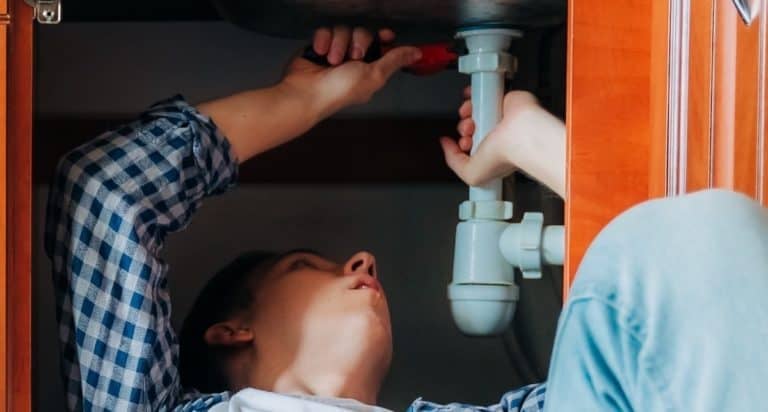There is a wall in my kitchen that I want taken down so, of course, like any other eager do it yourself-er, I watched a few episodes of Fixer Upper and was convinced I could easily demo it all by myself – like between lunch and dinner. But just in case I was wrong (and my construction skills were a bit over inflated), I asked my neighbor, a retired general contractor, to give me the low down on wall demo.
He looked at the wall for a few minutes, then looked at me and said, “You were going to try and take this down yourself?” I sheepishly nodded, then stood there stunned as he went on to tell me it would take no less than FOUR skilled tradesman to properly demo the wall, and then refurbish what would be left of that area. “FOUR?” I asked gasping, while quickly doing some remodeling costs in my head.

Naively I thought that removing a wall was as simple as it seemed on HGTV, but quickly learned it required an electrician (there’s power in the wall), a plumber (forgot to mention there is a water line in the wall), a drywall specialist for ceiling repair, and a flooring installer to patch up the tile where the wall was. All of those skilled workers would need be paid handsomely – their time and trades suddenly becoming of more value to me than my personal physician.
And yet right at that moment, I would bet my house on the fact there are very few conversations going on in a high school classroom right now where an educator or counselor is saying to a student, “College isn’t for everyone, and a career in construction or learning a trade is noble, lucrative, and can provide you not just with a great living, but also a real purpose.” Nope. That is not happening.
Right now it’s all about SAT scores, college essay prompts, “reach” and “safe” schools, and FAFSA and scholarship applications. You’d be hard pressed to find a school sponsored “skilled trades” or “vocational night” scheduled on a high school calendar, and we all know what happened to shop class, and other on the job training and transitional programs like cosmetology and mechanics.
We – parents, teachers, career counselors, EVERYONE, we’re all to blame for boxing in the trades as the “less than” post high school choice. We’re all to blame for using phrasing such as “college alternative,” which by way of using the word college first, can imply that any other alternative is simply not as ideal.
We’re all to blame for letting high schools gradually wean out the very programs that once produced highly employable adults right after graduation, by way of certifications and on the on the job training options. And we’re all the blame for casting a stigma on learning a trade as a career path that is of lesser status in the workforce, while we continue to lift up university degrees as the only way to secure steady and meaningful employment.
I’m even able to admit now, having two kids currently in college but two more still at home, that I once thought that college was the only option for all my children. Even the way I spoke about it during their childhoods made it seem like not only was it the natural and obvious course of young adulthood, it was the most favorable option in my eyes, and anything less was just that – LESS. I also never brought up career paths and futures that included anything but those which required a bachelor’s degree, and I never framed a skilled trade as having as much meaning or importance a that of a professional white-collar career. My how my views on that have changed, thankfully.
How do we begin to change the stigma around learning a trade?
We begin at home as parents, when we interact in front of our young children with people like the A/C repairman, plumber, auto mechanic, heavy equipment operator, or flooring installer, we make a point of talking afterwards about how it’s those types of adults that keep the basic fundamentals of a civilized society humming along with precision and care.
We begin as educators, counselors, and parents, to push the dignity, value, and integrity that a career which doesn’t require college is more than capable of providing, and we especially do it for high schoolers that we can clearly see are not a fit for college. (And not being a fit is NOT a bad thing here, it’s recognizing that putting a kid in college who is not a fit could potentially bankrupt them in student loan debt, and/or culminate with a dropping out situation, all because everyone in that student’s life pushed an option that is seen as the “only” one to guarantee future success.)
And we begin when school systems vow to bring the trades (and their training programs) back into high school classrooms, giving them the same importance, funding, and value consideration as they do hi-tech STEM and computer coding programs.
When all of the aforementioned begin to be enthusiastically and unconditionally met, only then will we see the much-needed resurgence of a skilled workforce. The alternative? Well, it’s an entire generation of college degreed young people who have no working indoor plumbing, no walls in their offices, no running cars driving on paved roads, and an environment devoid of skilled humans that literally keep life running. And that’s a very scary thing.
Related:








